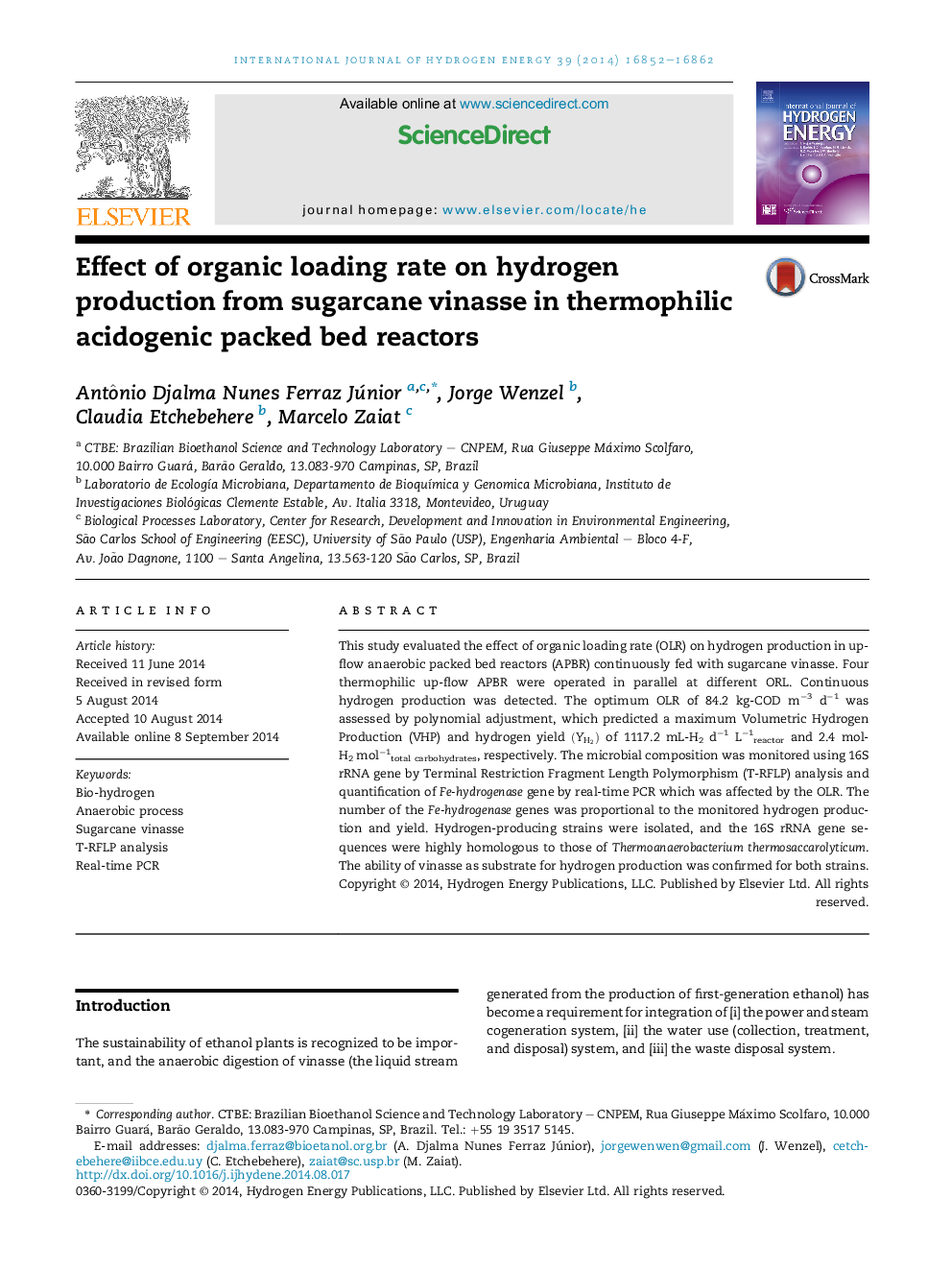| Article ID | Journal | Published Year | Pages | File Type |
|---|---|---|---|---|
| 1272141 | International Journal of Hydrogen Energy | 2014 | 11 Pages |
•Bio-hydrogen from sugarcane vinasse in acidogenic bed reactors (APBR) was studied.•High OLR can be applied in thermophilic APBR for hydrogen production.•The microbial composition was affected by the OLR as reveled the T-RFLP data.•Hydrogen-producing bacteria were quantified by real-time PCR analyses.•Strains with high homology to Thermoanaerobacterium thermosaccarolyticum were isolated.
This study evaluated the effect of organic loading rate (OLR) on hydrogen production in up-flow anaerobic packed bed reactors (APBR) continuously fed with sugarcane vinasse. Four thermophilic up-flow APBR were operated in parallel at different ORL. Continuous hydrogen production was detected. The optimum OLR of 84.2 kg-COD m−3 d−1 was assessed by polynomial adjustment, which predicted a maximum Volumetric Hydrogen Production (VHP) and hydrogen yield (YH2)(YH2) of 1117.2 mL-H2 d−1 L−1reactor and 2.4 mol-H2 mol−1total carbohydrates, respectively. The microbial composition was monitored using 16S rRNA gene by Terminal Restriction Fragment Length Polymorphism (T-RFLP) analysis and quantification of Fe-hydrogenase gene by real-time PCR which was affected by the OLR. The number of the Fe-hydrogenase genes was proportional to the monitored hydrogen production and yield. Hydrogen-producing strains were isolated, and the 16S rRNA gene sequences were highly homologous to those of Thermoanaerobacterium thermosaccarolyticum. The ability of vinasse as substrate for hydrogen production was confirmed for both strains.
